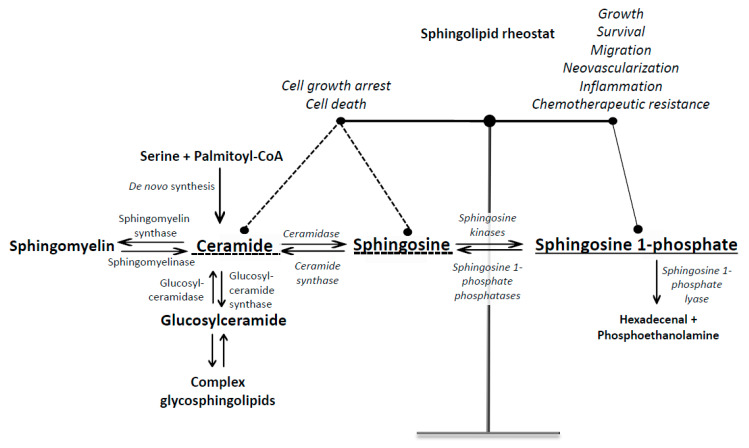Figure 1.
Simplified scheme of sphingolipid metabolism and turnover. Ceramide can be produced either de novo from serine and palmitoyl-CoA or by hydrolysis of complex sphingolipids (sphingomyelin and glycosphingolipids). S1P is produced by hydrolysis of ceramide to sphingosine by ceramidases followed by the phosphorylation of sphingosine by sphingosine kinases. S1P can be either dephosphorylated back to sphingosine by S1P phosphatase or irreversibly cleaved by S1P lyase into phosphoethanolamine and hexadecenal. Ceramide, sphingosine and S1P have opposing functions, and their intracellular balance is a critical regulator of cell fate.

